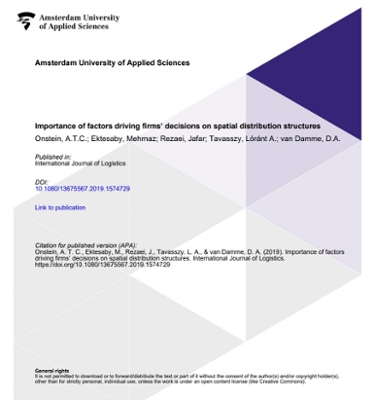Importance of factors driving firms’ decisions on spatial distribution structures
ArtikelThe design of a spatial distribution structure is of strategic importance for companies, to meet required customer service levels and to keep logistics costs as low as possible. Spatial distribution structure decisions concern distribution channel layout – i.e. the spatial layout of the transport and storage system – as well as distribution centre location(s).
This paper examines the importance of seven main factors and 33 sub-factors that determine these decisions. The Best-Worst Method (BWM) was used to identify the factor weights, with pairwise comparison data being collected through a survey. The results indicate that the main factor is logistics costs. Logistics experts and decision makers respectively identify customer demand and service level as second most important factor. Important sub-factors are demand volatility, delivery time and perishability. This is the first study that quantifies the weights of the factors behind spatial distribution structure decisions. The factors and weights facilitate managerial decision-making with regard to spatial distribution structures for companies that ship a broad range of products with different characteristics. Public policy-makers can use the results to support the development of land use plans that provide facilities and services for a mix of industries.

